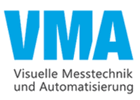How do I reduce my CO2 footprint as a manufacturing company? The industry working group Research & Technology conveyed various approaches that can also be implemented in glass machinery manufacturing.
The European Green Deal - climate neutrality by 2050 - has a massive impact on society and industry. European regulation, financial and capital markets, market perspectives as well as product branding and the handling of resources and nature are topics that companies have to deal with when it comes to their future competitiveness. There is no way around measures that serve to improve one's own environmental balance. This is primarily a matter of reducing and avoiding carbon dioxide, not so much of compensating for it.
According to the Greenhouse Gas Protocol - a recognised international standard for accounting and reporting greenhouse gas emissions - reporting for companies distinguishes between direct emissions from own combustion (Scope 1), indirect emissions from the purchase of grid-bound energy (Scope2) and other indirect emissions from processes and products caused directly or indirectly by the company (Scope 3).
More transparency via software
Not only the company's own production, but also the climate footprint of its suppliers plays a decisive role (Scope 3) - especially with regard to the European Supply Chain Act. Siemens AG, a global corporation with 66,000 suppliers in 145 countries, is mastering this challenge with a software tool that Siemens developed together with the company ctrl+s. Suppliers go through an assessment that influences the company's purchasing decision. By 2030, Siemens wants to reduce its upstream CO2 footprint (Scope 3) by 20 per cent and be climate neutral by 2050. The aim is not only to evaluate primary data supplied by suppliers, but also to make


























